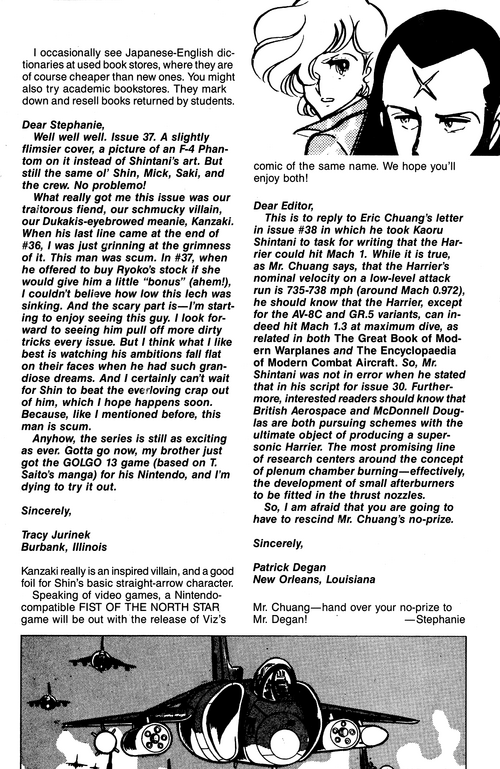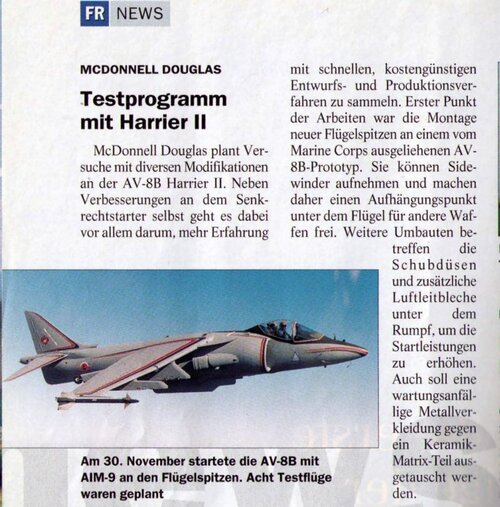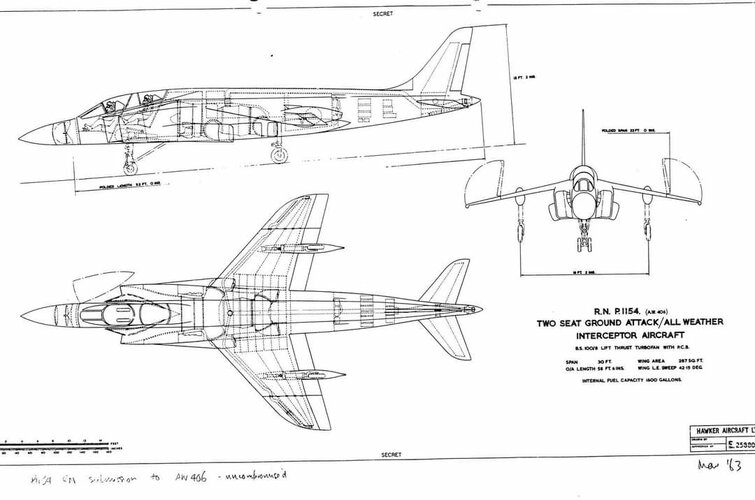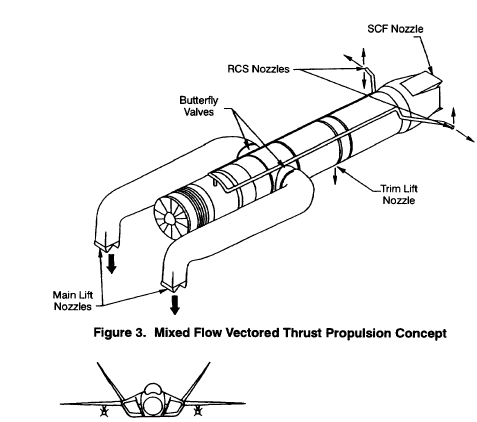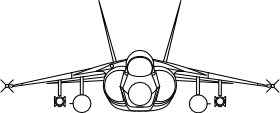Scott Kenny
ACCESS: USAP
- Joined
- 15 May 2023
- Messages
- 11,539
- Reaction score
- 14,137
Wish those had been more standard, but I suspect they didn't have a combat maneuvering G load.I've discovered in Air Enthusiast of May 1972 that the Harrier T.52 G-VTOL could be modified with extended "big-wing" tips of 27 inch for ferry flights.
View attachment 722503




